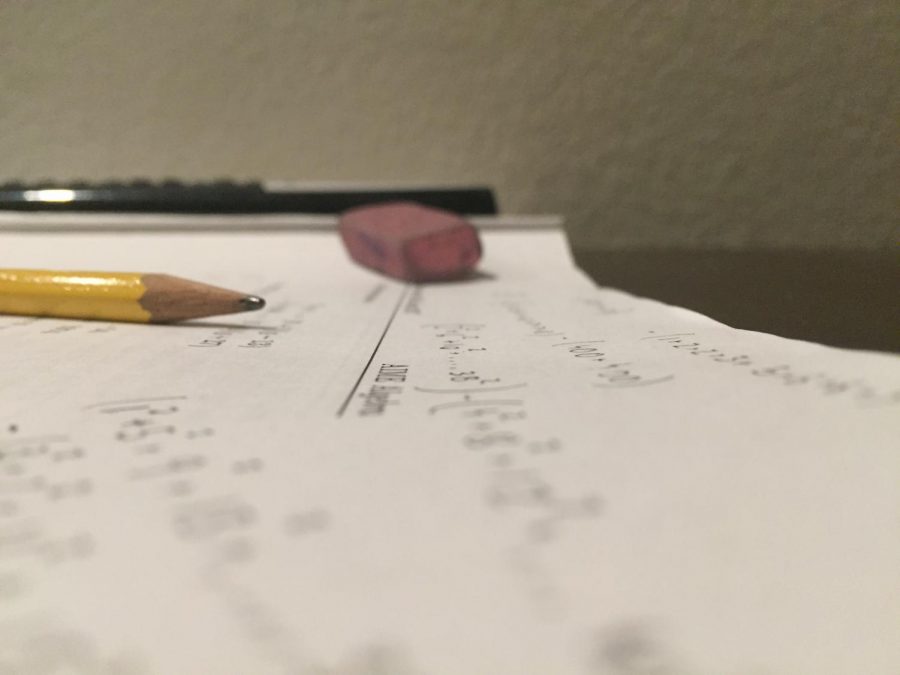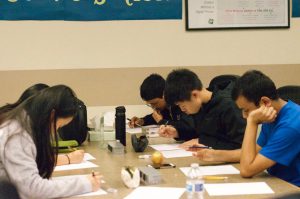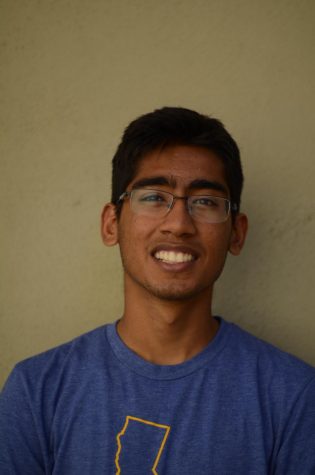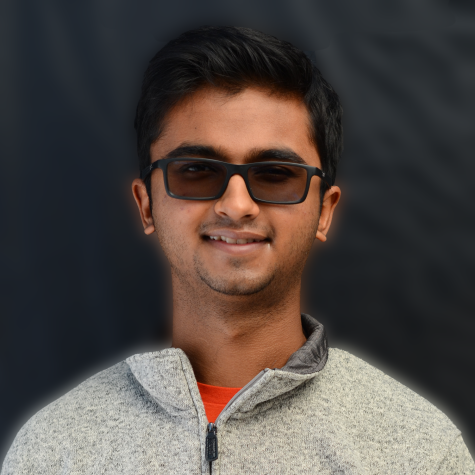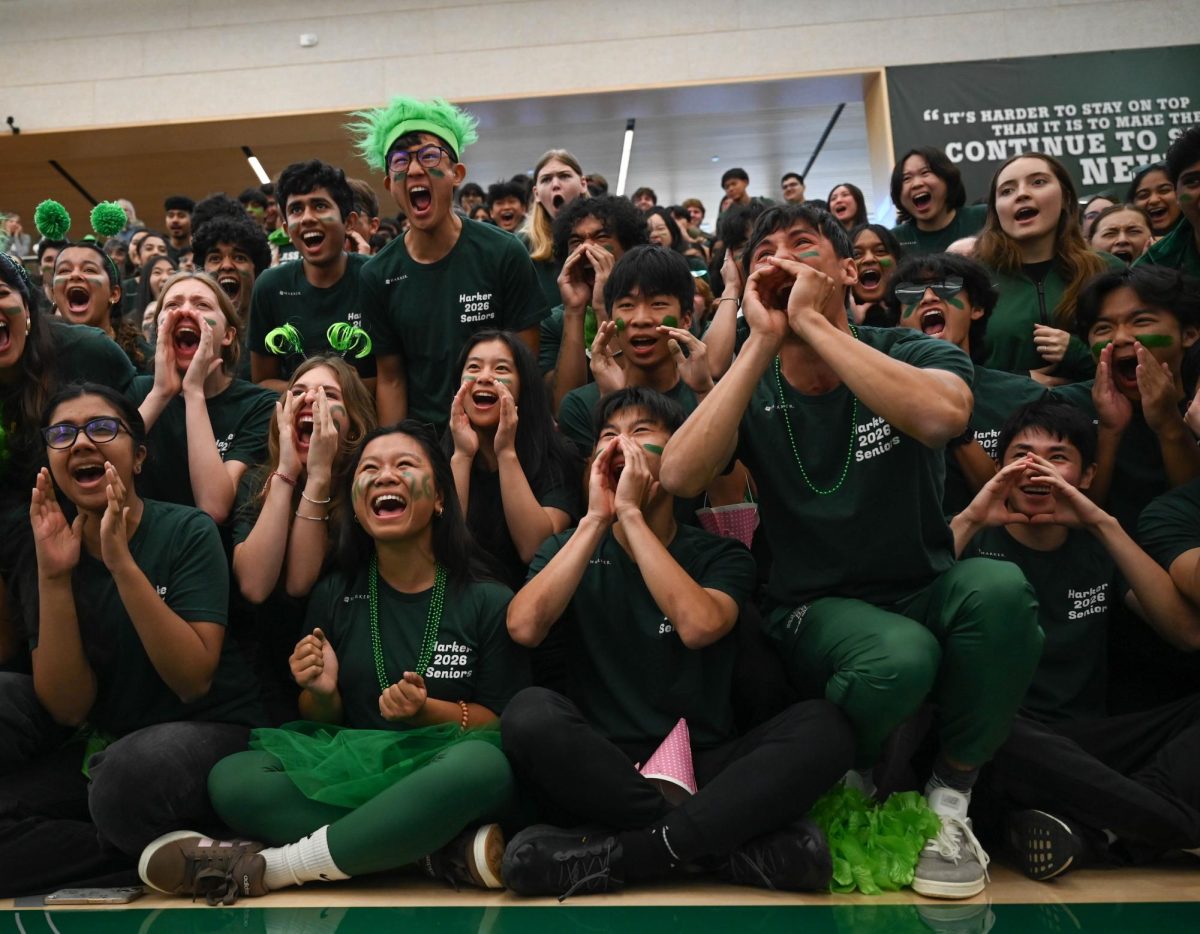Competitive math draws participants of all ages
October 18, 2018
Rows and rows of seats in a college lecture hall fill up with anxious students, armed with yellow #2 pencils, fully charged TI-84s and blank sheets of paper. Proctors distribute tests, making their way down the aisles while issuing stern directions. Soon, the talking dies down and the command of “You may begin” echoes through the hall, immediately followed by a loud shuffling of paper. For an hour, students stay hunched over their desks, the silence interrupted only by the turning of pages.
Variations of this scene are played out at thousands of competitive math contests across the world every year. Many perceive math as nothing more than a required subject at school that has no day-to-day applications beyond basic algebra; naturally, it baffles those outside the mathematical community when competitive math so closely resembles taking a dreaded math test.
“I think a lot of people have this idea [that] math is about memorizing formulas and that’s not very fun,” Michael Wang (12), co-president of the math club, said. “But for me, math is more about thinking — applying those formulas in creative ways — than actually knowing the formulas.”
Contest math requires creative and unusual applications of standard mathematical knowledge to solve problems in a competition setting, making it more about problem-solving than traditional math.
It is conventionally divided into four categories: algebra, which deals with the analytical manipulation of equations; number theory, which deals with the properties and relationships of integers; geometry, which deals with figures and space; and combinatorics, which involves the combination and counting of objects constrained by certain rules . Although these categories appear to differ significantly, they are interrelated and can be innovatively used in conjunction to solve problems.
“I like the creative problem solving aspect, like solving puzzles, encountering new theorems and new ideas,” Kat Tian (12), co-president of the math club, said. “There’s a beauty in the rigor that math uses to model the world around us.”
The math club, advised by mathematics teacher Dr. Anu Aiyer, organizes most competition math-related events at the upper school. In addition to hosting weekly competitions for members, the club travels to various national mathematics competitions, including the upcoming Princeton University Mathematics Competition (PUMAC) on Nov. 17. These trips provide members with valuable opportunities to interact with other mathematically-inclined students.
“I think it’s a really inspiring community because a lot people in the math community are really dedicated and really love doing it,” Michael said. “Being around these people inspires you. It’s just a really inspiring thing, when people push each other to the limits.”
This piece was originally published in the pages of The Winged Post on Oct. 17, 2018.


















![“[Building nerf blasters] became this outlet of creativity for me that hasn't been matched by anything else. The process [of] making a build complete to your desire is such a painstakingly difficult process, but I've had to learn from [the skills needed from] soldering to proper painting. There's so many different options for everything, if you think about it, it exists. The best part is [that] if it doesn't exist, you can build it yourself," Ishaan Parate said.](https://harkeraquila.com/wp-content/uploads/2022/08/DSC_8149-900x604.jpg)




![“When I came into high school, I was ready to be a follower. But DECA was a game changer for me. It helped me overcome my fear of public speaking, and it's played such a major role in who I've become today. To be able to successfully lead a chapter of 150 students, an officer team and be one of the upperclassmen I once really admired is something I'm [really] proud of,” Anvitha Tummala ('21) said.](https://harkeraquila.com/wp-content/uploads/2021/07/Screen-Shot-2021-07-25-at-9.50.05-AM-900x594.png)







![“I think getting up in the morning and having a sense of purpose [is exciting]. I think without a certain amount of drive, life is kind of obsolete and mundane, and I think having that every single day is what makes each day unique and kind of makes life exciting,” Neymika Jain (12) said.](https://harkeraquila.com/wp-content/uploads/2017/06/Screen-Shot-2017-06-03-at-4.54.16-PM.png)








![“My slogan is ‘slow feet, don’t eat, and I’m hungry.’ You need to run fast to get where you are–you aren't going to get those championships if you aren't fast,” Angel Cervantes (12) said. “I want to do well in school on my tests and in track and win championships for my team. I live by that, [and] I can do that anywhere: in the classroom or on the field.”](https://harkeraquila.com/wp-content/uploads/2018/06/DSC5146-900x601.jpg)
![“[Volleyball has] taught me how to fall correctly, and another thing it taught is that you don’t have to be the best at something to be good at it. If you just hit the ball in a smart way, then it still scores points and you’re good at it. You could be a background player and still make a much bigger impact on the team than you would think,” Anya Gert (’20) said.](https://harkeraquila.com/wp-content/uploads/2020/06/AnnaGert_JinTuan_HoHPhotoEdited-600x900.jpeg)

![“I'm not nearly there yet, but [my confidence has] definitely been getting better since I was pretty shy and timid coming into Harker my freshman year. I know that there's a lot of people that are really confident in what they do, and I really admire them. Everyone's so driven and that has really pushed me to kind of try to find my own place in high school and be more confident,” Alyssa Huang (’20) said.](https://harkeraquila.com/wp-content/uploads/2020/06/AlyssaHuang_EmilyChen_HoHPhoto-900x749.jpeg)



